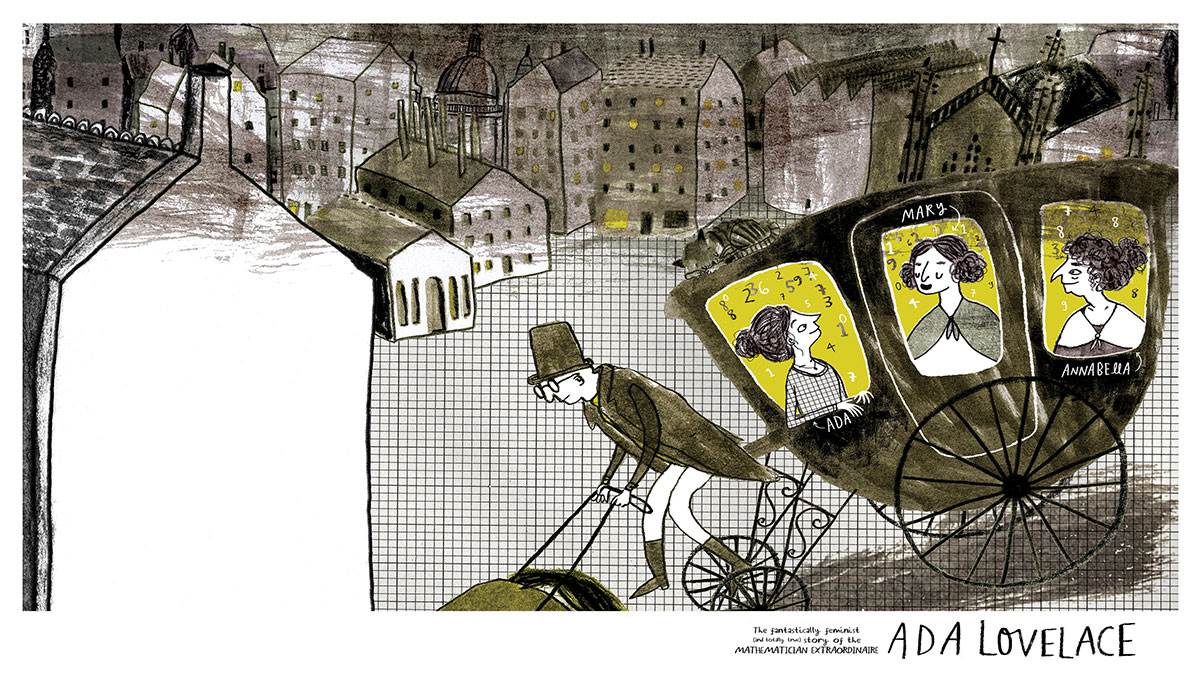Why you should be obsessed with Ada Lovelace (just like me)
Published on: 08 October 2019 Author: Anna Doherty
Rebel, rule-breaker and number whizz: there are so many reasons to love Ada Lovelace. It's no wonder that there's even an Ada Lovelace Day to celebrate her legacy! Anna Doherty tells all...

I’ve been obsessed with Ada Lovelace for a long time.
When I was at school, I had two favourite subjects: maths and art. But these two subjects were always very separate, so as I grew up, I had to pick one over the other. I decided to go to art college because art was also my hobby, and who wouldn’t want a career of your hobby? So maths went on the backburner for a while.
Then, The Imitation Game hit the cinemas. It’s a film about Alan Turing and how he built the first-ever computer. My love of maths flooded back, and I ran home to frantically google mathematicians for hours. I came across Ada Lovelace.
I hadn’t heard of her before, but she was one of the few female mathematicians among hordes of men, so she stuck out. There was a painting of her in a purple dress with fancy hair. She looked so appealing. And there were beautiful quotes about her from her friends, calling her a 'lady fairy' and an 'enchantress of numbers'. The internet informed me she was the first computer programmer, and she was from the 1800s, but I couldn’t find much else.

I told my tutor about her, and he suggested I get in touch with the BBC archives. They pinged over old radio shows with mathematicians singing her praises and explaining her life story.
From then on, I was obsessed. I listened, read, googled, absorbed anything I could find about her. It seemed other people had suddenly discovered her too, because, slowly, TV shows and articles and books began to pop up about Ada, and I could learn more and more.
World's first computer programmer
In brief, Ada was the world’s first computer programmer – 100 years before the first computer was even invented. She grew up in a strict household, and sought out people to teach her maths and science for her whole life, despite living in a time when women weren’t expected to be educated. Fascinated by engines, her free time was spent designing machines to count and fly and write music.
I loved her because her life was so interesting and unusual, and she had such a great character. Passionate and determined, but also an imaginative rebel and a spirited rule-breaker.

And then two things happened:
- I went to the science museum in London and saw the machine Ada helped design, The Analytical Engine – and also a lock of Ada’s hair, which made her feel so real.
- I was now studying Children’s Book Illustration MA at Cambridge School of Art, and we had a visiting lecturer come, William Grill, who wrote a beautiful book called Shackleton’s Journey, about the true story of Ernest Shackleton’s expedition to Antarctica. It was the first time I’d properly seen a non-fiction children’s book that was fully illustrated and written in a narrative way, rather than little bites of information with photos.

And those two things together sparked the beginning of my Ada book. I finally could combine my love of maths and illustration.

Writing about fabulous women
After months of research, writing, sketching, editing, I produced a dummy book (a rough idea of what a book will look like), and luckily Wren and Rook came across it and were interested.
We decided to work together to make Ada the basis of a series. We picked other Fantastically Feminist women to star alongside her, in a set of non-fiction books for children.
The Brontës came out first, in March of this year, followed by Ada Lovelace – and later this October, the third, Michelle Obama, will arrive. (And keep your eyes peeled for the fourth book in the series, coming out next year!)
It’s been so amazing working on these titles, I’ve been so lucky to get to learn – and share – all about these fabulous women and their lives. They’re all from very different backgrounds, times, families and jobs, but they are all linked by the same qualities: dedication, persistence and enthusiasm. All qualities that I think are so important for all children to learn about!

Amazing symbol for children
I think what makes Ada Lovelace particularly such an significant figure for children to learn about, is her character: she was so headstrong, determined and passionate about what she loved, and didn’t let anything – society, the patriarchy, the times she lived in, her own health issues – stand in the way of her need to learn and explore maths and science. She knew what she wanted from her life, and she went out and got it, and she didn’t care what other people thought.

Ava is the figurehead for celebrating women in science everywhere, and she’s an amazing symbol for that – but equally she’s an amazing symbol for children to know that it’s OK and encouraged for them to follow their dreams, whatever they may be and despite what hurdles they have in their way.
Happy Ada Lovelace Day for 8 October – and every other day, too!

How to draw Ada Lovelace

Ada Lovelace: The Fantastically Feminist (and Totally True) Story of the Mathematician Extraordinaire by Anna Doherty is out now.
Check out our favourite kids' books that celebrate inspirational women
Topics: Historical, Science, Features






Add a comment